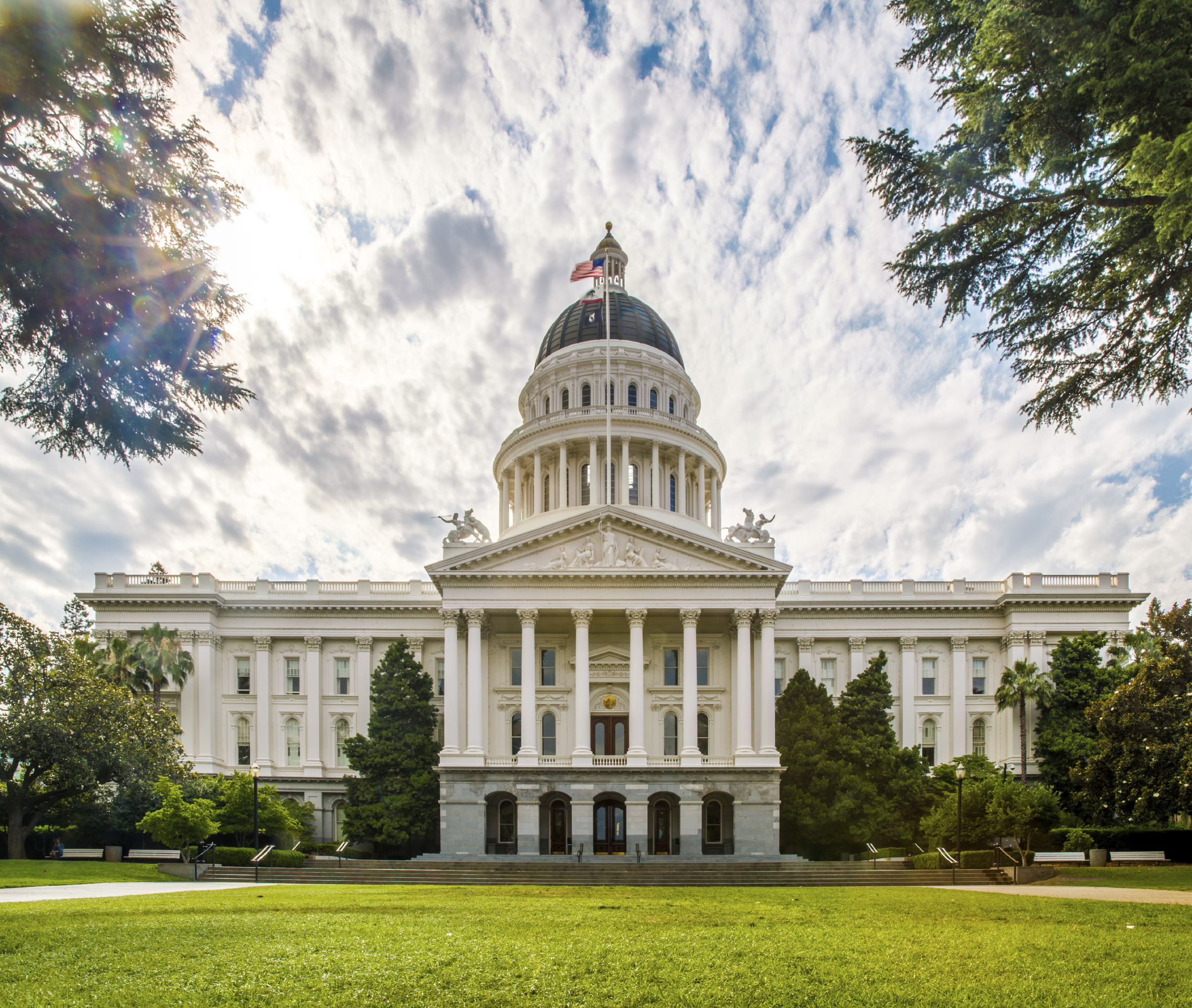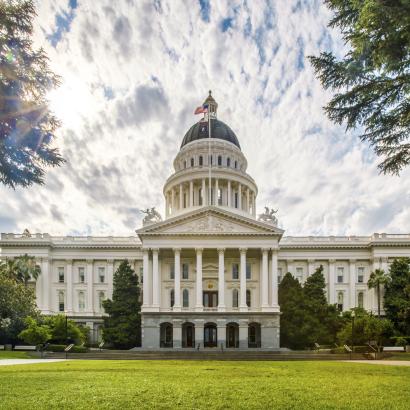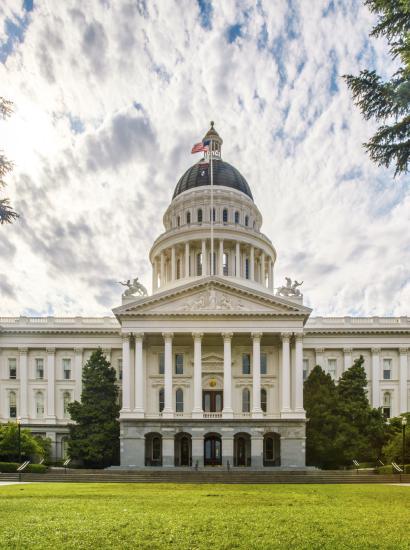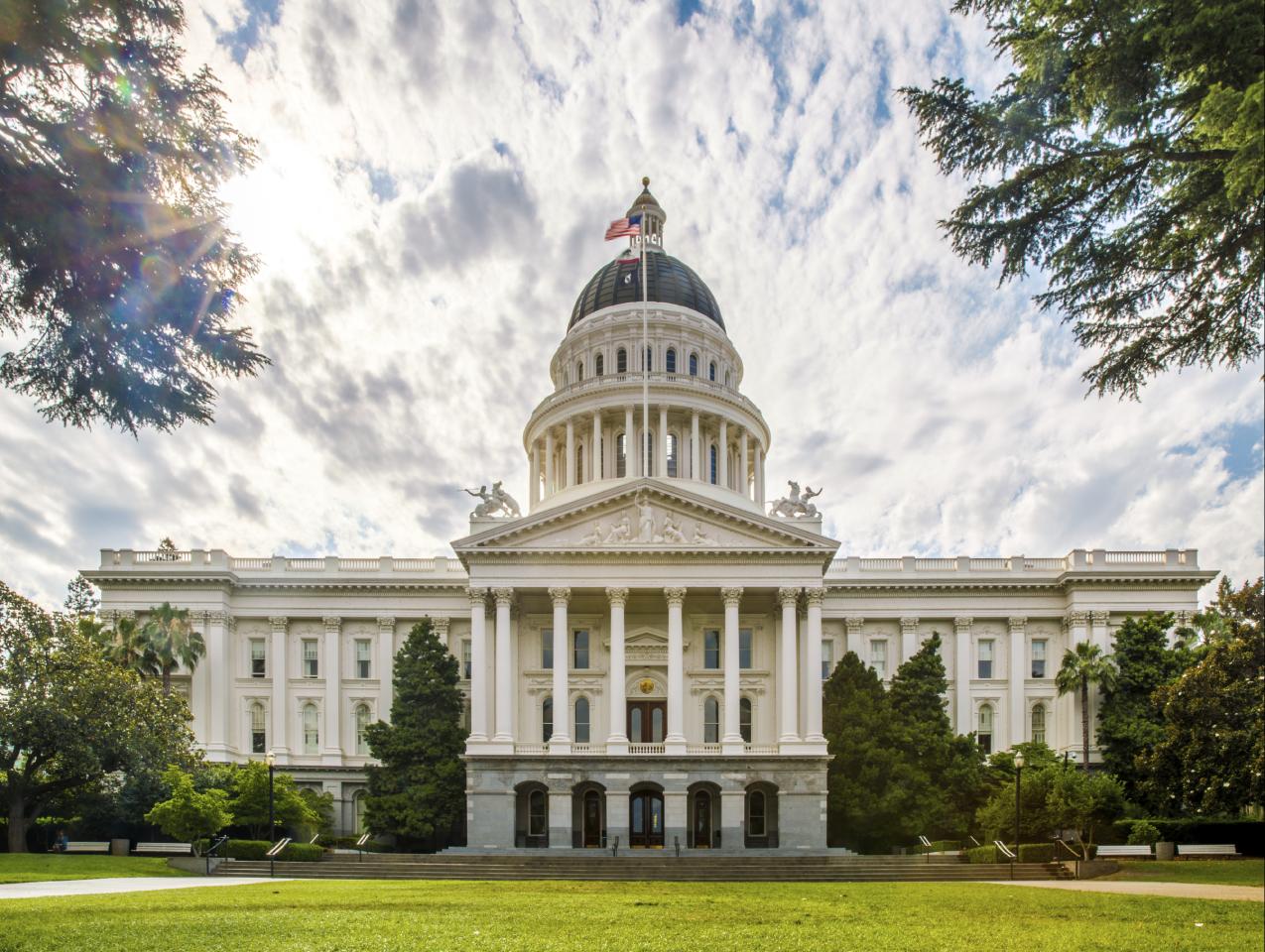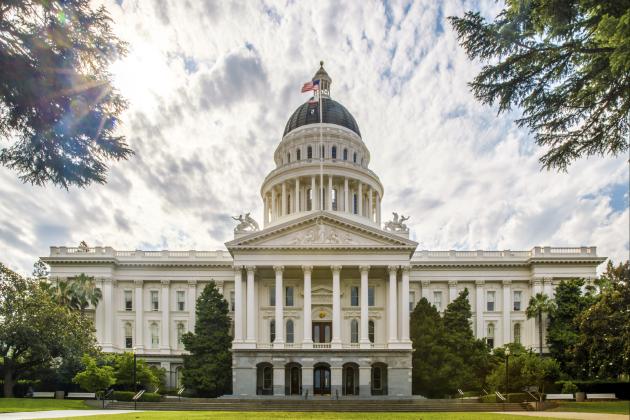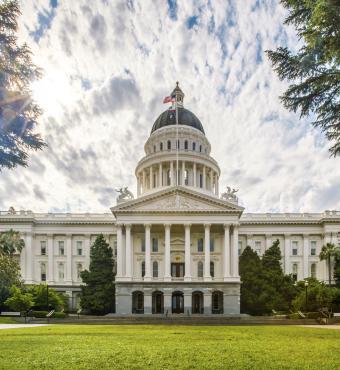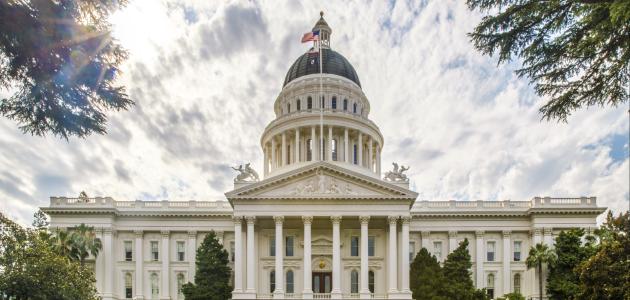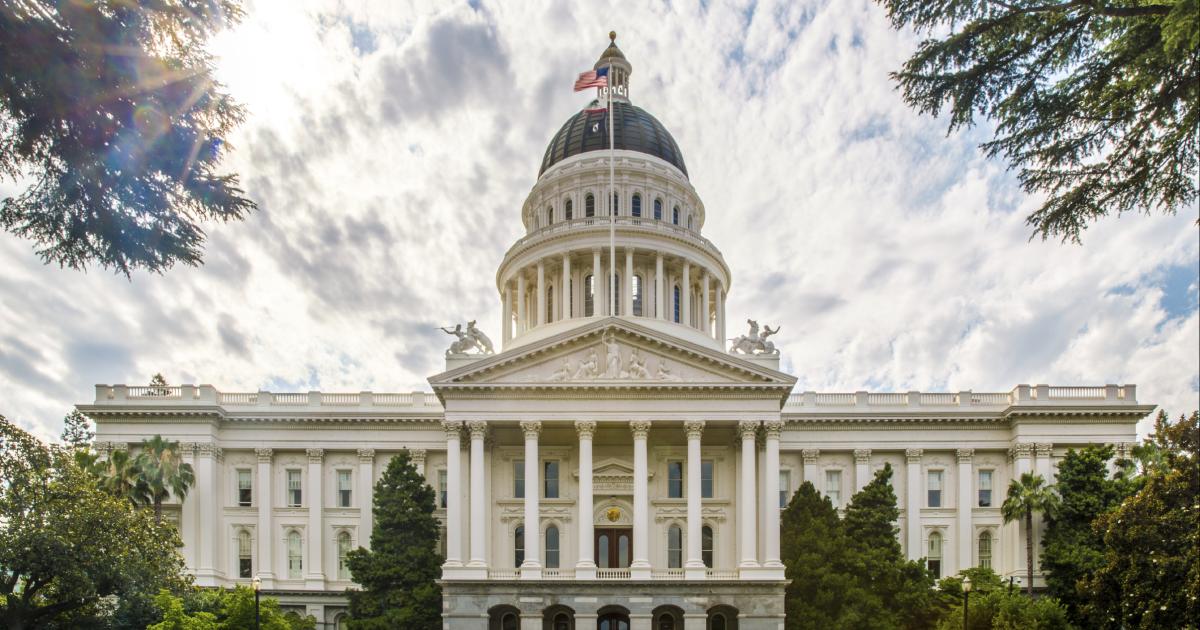To understand the job of governor of California is to appreciate the unexpected. In the Golden State, that includes acts of nature mostly beyond politicians’ preventive control (there’s no stopping an earthquake from happening, nor lightning from striking timber and sparking a wildfire).
On the other hand, there are problems that a politician could have seen coming and perhaps could have avoided, which is pretty much where Governor Gavin Newsom finds himself with regard to California’s debate over reparations for the state’s Black residents as compensation for slavery and other injustices.
Newsom’s problem: a California reparations task force (officially, the “Task Force to Study and Develop Reparation Proposals for African Americans”) wants the Golden State to not only issue a formal apology for slavery but also to potentially award billions of dollars in cash payments to eligible Californians (an estimated sum of at least $800 billion, with some recipients potentially receiving up to $1.2 million apiece).
Though the exact details of what California will consider in the way of reparations is not final —the task force has until July 1 to submit a report to the state legislature, which in turn will have to decide on whether to send a bill the governor’s way—here’s where Newsom got himself into political trouble.
First, Newsom got the reparations ball rolling by signing the legislation that created the task force. That occurred in September 2020, on the eve of a presidential election in which Black voter turnout was the key to Joe Biden’s prospects. Newsom, as he tends to be in moments that he deems pioneering, laid on the rhetoric extra thick: “Our painful history of slavery has evolved into structural racism and bias built into and permeating throughout our democratic and economic institutions. California’s rich diversity is our greatest asset, and we won’t turn away from this moment to make right the discrimination and disadvantages that Black Californians and people of color still face.”
Second (and this ties into the next point), the legislation was designed in a way that benefited Newsom—the governor getting to appoint five of the nine task force members. If Newsom wanted a final report to materialize in a way he preferred—e.g.., with less emphasis on cash payments and a greater emphasis on reparations in a noncash form (such as housing vouchers or investing in minority communities)—this was his opportunity to do so.
Which takes us to Newsom’s third self-inflicted wound: he hasn’t made clear what exactly California should do if the end result is atoning for sins of the past. (Though California was admitted to the union as a “free state” as a result of the Compromise of 1850 and slavery was constitutionally banned, the practice still continued out in the open).
Here’s how Newsom responded when news of what the reparations task force intended to forward to state lawmakers first broke: “Dealing with [slavery’s] legacy is about much more than cash payments,” Newsom said via a prepared statement. “This work must continue. Following the Task Force’s submission of its final report this summer, I look forward to a continued partnership with the Legislature to advance systemic changes that ensure an inclusive and equitable future for all Californians.”
If that sounded like the governor pouring cold water on the idea of megabucks payouts, his press office made certain that wasn’t necessarily the case, with a Newsom spokesperson telling reporters that his boss “is not backing away from cash payments but wants to wait for the report in its entirety to arrive on his desk before he makes any decision.”
So where does California go from here?
Brace yourself for a very cynical take.
First, the legislature takes the task force’s findings, fiddles with the math, makes sure there are sweeteners for progressives and political revisionists (e.g., insisting upon an apology for then governor Ronald Reagan’s use of the term “welfare queen”) and forwards it to the governor. (The journalistic watchdog CalMatters has created an interactive tool, using the task force’s final reports, to figure how much an individual would be owed.)
Second, Newsom signs the bill. Only, it’s in the form of a ballot measure to go before California voters in the November 2024 election.
Why would Newsom and the legislature do so?
Again, brace yourself for a heaping helping of political cynicism.
At a time when California’s coffers have gone from plentiful to penurious (last year’s record $97.5 billion surplus is now a $32 billion deficit and perhaps growing), the state simply doesn’t have the resources to pay for a plan that will cost more than two-and-a-half times California’s annual state budget. Newsom himself has limited the funding options—calling for a tax increase would be a remarkable course correction for a governor who recently said no to higher taxes on corporate income.
But why would Newsom and lawmakers leave it up to voters to decide reparations’ fate? Again, a cynical political take: they know a majority of voters won’t sign off on the plan.
Keep in mind: in 2020, the same year Newsom signed the bill creating the reparations task force, California voters faced a ballot measure that’s tied to the current reparations debate. That would be Proposition 16, which sought to overturn 1996’s Proposition 209 and reinstate racial quotas for public college admissions and government hiring. The connection: buried deep inside the reparations task force’s recommendation is a proposal to repeal Prop 209.
In the 2020 election, Prop 16 received less than 43% support statewide. Translated another way: nearly 57% of Californians voted to keep the affirmative-action ban in place nearly 25 years after 54.5% of state voters first endorsed the ban. A progressive groundswell that is not.
Then again, there’s a deeper challenge facing any initiative campaign that tries to sell reparations to California voters: keeping the state’s progressive base intact.
According to US Census data, California’s population breaks down as 40.2% Latino, 35.2% White, 16.4% Asian American or Pacific Islander . . . and only 6.5% Black (plus another 1.7% of Californians who identify as Native American or Alaska Natives). A California voter of Asian heritage might ask: where’s the compensation for 19th-century Chinese immigrants who suffered through multiple indignities? Just as Latino Californians could point to a past of pain and suffering.
Moreover, there’s the wrongful assumption that Black Californians would vote en masse for a reparations initiative. During the course of its meetings, the reparations task force narrowly defined eligible recipients as individuals “being an African American descendant of a chattel enslaved person or the descent of a free Black person living in the U.S. prior to the end of the 19th century.” By doing so, the task force eliminated about one-fifth of California’s estimated 2.6 million Black residents from the reparations—voters who might decide to get even at the polls.
Here’s one last very cynical observation, assuming my scenario plays out and voters reject reparations via a popular vote: the long-term political winner would be none other than Newsom himself.
Here’s why: any gubernatorial rejection of a reparations bill would damage Newsom’s presidential prospects, if he hopes to one day lead a party whose first presidential primary in 2024 was relocated from lily-White New Hampshire to South Carolina, where 60% of the Democratic electorate is Black. How interested is Newsom in staying on solid ground with Democratic Black voters? He promised to appoint a Black woman to replace Sen. Dianne Feinstein if she decided to leave office before her term expires at the end of 2024. Newsom’s recent tour of the Deep South and pilgrimage to iconic civil rights venues in Alabama and Arkansas likewise could be seen as compensating for a biography that doesn’t scream underprivileged or discriminated (thanks in part to wealthy connections, he made a fortune in upscale wines and hospitality as he climbed the political ladder).
Here’s one final thought on reparations, and that’s the concept of a do-over and two approaches the reparations task force side-skirted.
First, California might want to look what’s transpired in Evanston, Illinois, the university town north of Chicago whose population is about 16.% Black or African-American.
Plagued by a history of anti-Black zooming laws and housing practices, the city offered reparations in the form of grants up to $25,000 but restricted to mortgage assistance, renovations, or down-payments on homes (in late March, Evanston’s Reparations Committee unanimously recommended the inclusion of a fourth option for beneficiaries: direct cash payments).
One other consideration, should a reparations task force consider the present conditions of Black Californians: a public school system in the Golden State that underserves children of color. According to California’s Smarter Balanced data, 84% of Black sixth-grade students didn’t meet state math standards last year. Per California’s Education Department, a wide achievement gap between Black students and their White peers has narrowed only slightly. During the pandemic, the graduation rate of Black students fell, while the graduation rate for White students improved slightly.
Now, who’s to blame for that?







